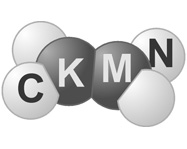Avondlezing door dr. Henk Schut georganiseerd door de Chemische Kring Midden Nederland.
Samenvatting
Positron Annihilation (PA) is a sensitive non-destructive, contact less method for the detection and characterization of atomic scale open volume defects, nano-precipitates, and free volume in solids, such as semiconductors, metals (alloys), insulators and polymers. The majority of the experimental PA techniques developed to this aim are based on the analysis of the annihilation radiation. They can be classified into two groups, which are distinguished by the positron’s sensitivity to the local electron density (positron lifetime, PALS) or to the local electron momentum distribution (Doppler broadening (PADB) and 2D-ACAR).
Further classification can be made on basis of the kinetic energy distribution of the positrons as probing particle. Positrons emitted and directly injected from a radio-isotope have a wide energy distribution and therefore only yield information averaged over the positron implantation range which may extend up to several 100 micron. This drawback is overcome using variable energy positron beams which enable the investigation of surfaces, sub-surface defects and precipitates, and interfaces up typically a few microns with depth resolution of about 10%.
The recent development of sophisticated programs for (ab-initio) calculation of the positron-solid and positron-defect interactions enables direct comparison of the above-mentioned observables with predictions based on theory.
In this lecture the above topics will be addressed and examples of applications will be given.
Curriculum vitae: I obtained my M.Sc. degree in physics in 1985 at Utrecht State University on a project in collaboration with the Delft Inter-university Reactor Institute (IRI) investigating the state of dense He gas trapped in nano-sized defects in aluminum films using Vacuum Ultraviolet (VUV) spectroscopy. This research triggered my interest in the fundamental aspects of the creation (by radiation impact) and evolution of defects in materials using positrons (the anti-particles of the electrons) as probing particle. This, at that time emerging field of research, is presently referred to as Positron Annihilation spectroscopy.
I obtained my M.Sc. degree in physics in 1985 at Utrecht State University on a project in collaboration with the Delft Inter-university Reactor Institute (IRI) investigating the state of dense He gas trapped in nano-sized defects in aluminum films using Vacuum Ultraviolet (VUV) spectroscopy. This research triggered my interest in the fundamental aspects of the creation (by radiation impact) and evolution of defects in materials using positrons (the anti-particles of the electrons) as probing particle. This, at that time emerging field of research, is presently referred to as Positron Annihilation spectroscopy.
From 1985-1990 I did my PhD research in the group Defects in Materials of the section Reactor Physics. In my thesis entitled “A variable positron beam facility with applications in materials science” a description of the realization of the first and still unique Dutch positron beam facility and it’s early applications can be found. During this period I had the chance to visit the positron group at Brookhaven National Laboratory and to collaborate in their research. From then on I am working at the TUD/RID as assistant professor in the section Positron and Neutron Methods in Materials. In 2000 this culminated in the realization of the first nuclear reactor based high intensity variable energy positron (POSH) beam. Using the energetic gamma radiation near the core of the 2 MW Delft Hoger Onderwijs reactor (HOR) a high flux of positrons is created for 2D-ACAR and Coincident Doppler broadening studies in materials. Currently this facility is being extended with a positron annihilation lifetime POSH PALS spectrometer.
My scientific interest and expertise are on the development and application of positron annihilation techniques in materials science with focus on defect studies in fusion and fission related metals (steel alloys, graphite), in semiconductors and polymers. At the moment this has resulted in over 180 scientific papers.
Currently, I am teaching Thermodynamics for Engineers and supervising positron annihilation research practicals for physics Bachelor students and lecturing several positron topical courses at the Masters level.
Introducé(e)s zijn van harte welkom.
Graag vooraf bericht als u verwacht te komen.
Stuur daartoe een mail naar chemdorpjwj@hotmail.com

